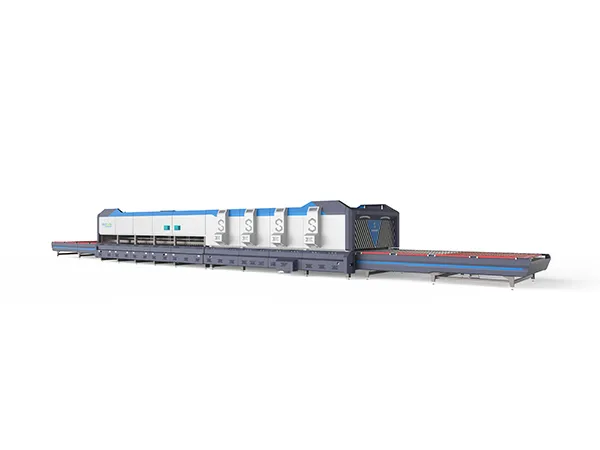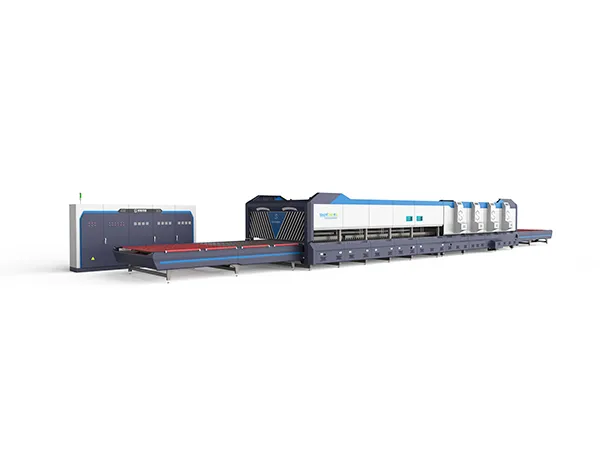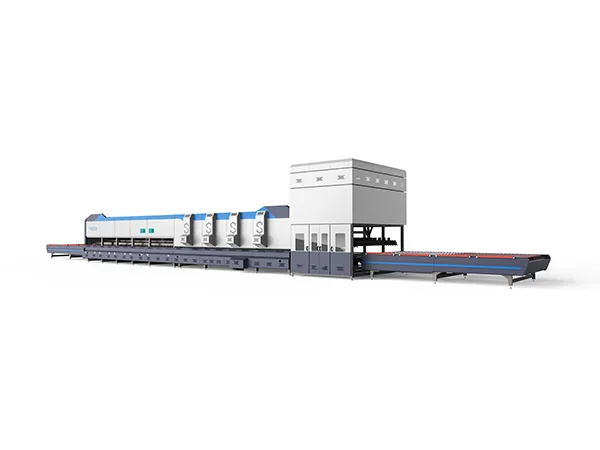Explosions in glass tempering furnaces can occur due to a variety of reasons, many of which stem from operational issues, material defects, or improper maintenance. Understanding these causes can help prevent such incidents.
Causes of explosion of glass tempering furnace

1. Glass Defects
Nickel Sulfide Inclusions (NiS): Nickel sulfide inclusions are microscopic impurities in glass that can cause it to shatter spontaneously. These inclusions can expand during the tempering process and lead to delayed failure, sometimes causing the glass to explode after being tempered.
Internal Stresses: If the glass is not properly annealed before entering the tempering process, internal stresses can build up. These stresses can cause the glass to explode under heat or when exposed to rapid cooling.
Surface Defects: Scratches, chips, or cracks on the glass surface can act as stress concentrators during the tempering process, leading to failure and explosion.
2. Incorrect Furnace Settings
Uneven Heating: If the furnace does not heat the glass evenly, it can cause thermal stress. Uneven heating or cooling (quenching) of the glass can lead to differences in expansion and contraction, resulting in glass breakage.
Overheating: Glass that is overheated in the furnace may develop severe internal stresses. When exposed to quenching (rapid cooling), it may fail and shatter explosively.
Incorrect Temperature Gradient: A proper temperature gradient between the heating and cooling sections of the furnace is crucial. If the temperature changes too rapidly or is unevenly distributed, it can cause thermal shock to the glass.
3. Improper Quenching (Cooling) Process
Insufficient or Excessive Cooling: The quenching process, where the glass is cooled rapidly, must be well-regulated. If the cooling is too rapid or uneven, it can lead to a high stress differential between the inner and outer layers of the glass, causing it to shatter.
Improper Airflow: The airflow during quenching should be evenly distributed. Uneven airflow can lead to localized cooling, creating stress points that may cause the glass to break or explode.

4. Furnace Design Issues
Poor Maintenance: A poorly maintained furnace can lead to mechanical malfunctions, uneven heating, or improper quenching, all of which can cause explosions.
Faulty Control Systems: Faulty sensors, thermostats, or controllers can result in inaccurate temperature readings or uneven heating/cooling cycles.
Furnace Contamination: If there is debris or foreign materials inside the furnace, it can cause temperature imbalances, potentially leading to glass failure and explosions.
5. Material Handling Issues
Improper Loading of Glass: If the glass is improperly loaded into the furnace (e.g., glass sheets are not evenly spaced), it can lead to uneven heating or contact between sheets, increasing the chance of explosion.
Glass Thickness Variability: Using glass of varying thickness in the same furnace load can cause uneven heating, as thicker sections will require more time to heat and cool evenly, potentially leading to breakage or explosion.
6. Contamination of Glass
Oil or Grease Contamination: Contamination of the glass with oils, grease, or other foreign substances can lead to hot spots or uneven heating during tempering, causing stress fractures or explosions.
Dust or Particulate Matter: Dust or particles on the glass surface can also cause localized heating differences, leading to failure during the tempering process.
7. Mechanical or Operational Failures
Sudden Power Failure: A sudden loss of power in the furnace can cause the glass to cool unevenly, leading to cracking or explosion.
Vibration or Shock: Vibrations or mechanical shocks to the furnace or glass during the tempering process can cause the glass to break, especially if there are pre-existing defects in the glass.

8. Human Error
Operator Mistakes: Errors in programming furnace settings, improper monitoring of temperature profiles, or mishandling of glass can lead to explosions.
Lack of Training: Inadequate operator training may lead to improper furnace operation, resulting in dangerous conditions for the glass.
Preventive Measures
To avoid these issues, manufacturers should implement rigorous quality control measures, regular maintenance of the furnace, and proper training for operators. Ensuring the use of high-quality glass materials and accurate control of furnace settings can significantly reduce the risk of explosions in glass tempering furnaces.










